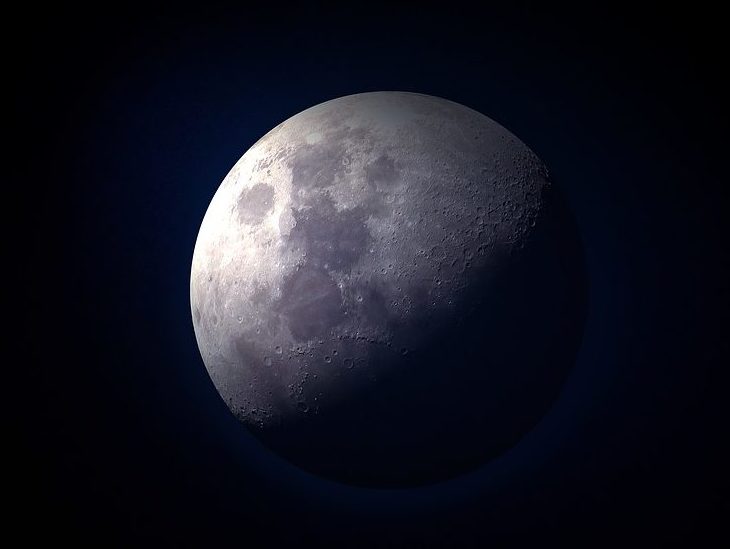
As demand for rare-earth minerals, which are used in a host of devices from smartphones to electric vehicle batteries, increases, national governments and private companies are looking to increasingly distant locations as a source of minerals and materials. With around 16,000 near-Earth asteroids considered “easily accessible” by US company Planetary Resources, and recent improvements in aerospace and autonomous technology enabling unmanned missions to reach them, space has become an increasingly attractive prospect for ambitious miners. Here are five key events in the history of space mining.
1969-72: US Apollo missions bring back moon rocks
In the three years after the Apollo 11 mission saw Neil Armstrong and Buzz Aldrin take the first steps onto the moon, subsequent NASA missions brought back 382kg of rock, sand and dust from the surface of the moon. Over the course of six missions, NASA astronauts recovered 2,200 samples from six different sites, and while none of these minerals were used for mining operations, they have been extensively studied to improve human understanding of the minerology of the moon.
This period also saw the first successful unmanned missions collect samples from the moon. Three Soviet missions brought back 300g of moon samples, including soil recovered by the Luna 16 mission similar in nature to that collected by American astronauts during the Apollo 12 mission. The successful use of automated drilling techniques, after five failed attempts, was a key accomplishment ahead of space mining operations, many of which are expected to be similarly unmanned and automated missions.
2005: Hayabusa recovers dust samples from Itokawa asteroid
Human interest in space shifted from the moon to asteroids, following 1972’s Apollo 17 mission, the last which saw people walk on the surface of the Moon. This interest was initially scientific, and in 2005 the Japan Aerospace Exploration Agency (JAXA) landed the unmanned Hayabusa craft on the near-Earth asteroid Itokawa.

US Tariffs are shifting - will you react or anticipate?
Don’t let policy changes catch you off guard. Stay proactive with real-time data and expert analysis.
By GlobalDataThe project was the first successful attempt to land a craft on an asteroid, and the Hayabusa collected over 1,000 dust grains from Itokawa. The craft returned to Earth in 2010, and scientists spent the next eight years analysing the samples, from which they were able to learn more about the asteroid’s age and history.
But as with the Luna 16 mission of the 1970s, the Hayabusa mission made a number of breakthroughs that would demonstrate the potential of asteroid mining. In addition to being the first craft to collect samples from an asteroid, the craft was the first vessel to land on an asteroid, take off again, and safely return to Earth. The mission’s ultimate success, despite setbacks including a solar flare striking the craft as it left Earth, proved that a number of logistical challenges involved in asteroid mining, such as the recovery of asteroid material, can be overcome.
2015: US space-mining law
With the technological plausibility demonstrated by the unmanned missions of previous decades, attention moved to establishing a legal framework for the mining of resources in outer space. The Commercial Space Launch Competitiveness Act, launched in 2015 and known simply as the Space Act, replaced the 1967 Outer Space Treaty, which prohibited national governments from staking claims to control over “celestial bodies” such as the moon. Importantly, the new act encouraged private companies to undertake mining work beyond Earth.
The act extends the period within which private companies can explore asteroids and other bodies before reporting to national governments, and gives them the right to claim resources they may one day be able to extract from those bodies. The act is an intentionally forward-looking document, and aims to establish laws that can be applied to widespread outer space mining, once private companies are in a position to begin large-scale mining projects.
While there are potential legal grey areas in the treaty, such as giving companies the right to claim mineral resources in space but not own property in keeping with the 1967 act, as well as only applying to US companies, it is an important first step in establishing a legal basis for space mining.
2016: Luxembourg’s SpaceResources initiative
Luxembourg’s SpaceResources programme builds on the legal precedent set by the US the previous year, and brings together a number of public and private organisations to aid in space exploration. These include the Luxembourg Government and the country’s ministry of the economy, alongside private companies such as Planetary Resources in the US and ispace in Japan.
The initiative is similar to the US treaty, enshrining the right of private companies to claim mineral deposits without violating the terms of the 1967 Outer Space Treaty, but is more proactive in establishing an international standard for space mining. By involving a number of companies from across the world, the initiative has a broader range than the US law. The Luxembourg Government also offers financial incentives for private companies pursuing mining projects as part of the initiative, as Luxembourg looks to position itself at the centre of European space mining.
2017-present: Luxembourg-space mining law and follow-up agreements
In 2017, Luxembourg passed its own US-style space mining law as part of the SpaceResources initiative, which aims to relax restrictions on private companies’ mining operations beyond Earth. Following the adoption of the law, Luxembourg has gone on to sign a number of agreements with other countries to further solidify international understanding of mining in space.
In November 2017, it signed a five-year agreement with the Japanese Government to exchange information on space mining and work together on future projects, alongside similar agreements with Portugal and the United Arab Emirates. In March 2019, Luxembourg held talks with Russia over a new treaty for space mining, as more and more global powers become involved in Luxembourg’s space mining framework.



